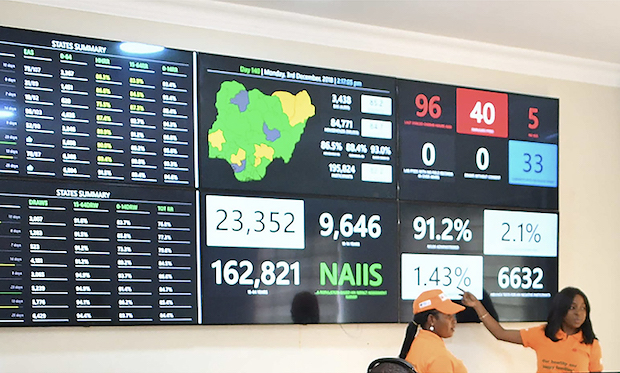Monitors Ensure Data Quality in PHIA Surveys
Over the last few years, Ciheb has implemented multiple population-based HIV impact assessments (PHIAs) in sub-Saharan Africa. These surveys measure the national progress in achieving HIV epidemic control by obtaining updated data on confidential HIV testing, counseling and treatment, prevention of mother-to-child transmission, and the impact of programs addressing sexually transmitted infections.
Recent PHIAs involving Ciheb include the 2018 Nigeria HIV/AIDS Indicator and Impact Survey (NAIIS), 2020 Botswana AIDS Impact Survey V (BAIS V), and the ongoing Zambia Population-Based HIV Impact Assessment (ZAMPHIA).
Data quality is necessary for accurate measurements and informed decision-making, a key component in implementing PHIAs successfully. Due to the complexity and vast nature of the PHIAs, data discrepancies are possible. In those instances, Ciheb’s health informatics group, the 201 Team, want to ensure that inconsistencies and errors in data collection are caught in real time. Thus, the 201 Team created a mobile monitoring tool for PHIA data quality control.
 The web-based dashboard that data monitors use for ZAMPHIA
The web-based dashboard that data monitors use for ZAMPHIA
How it works
The Activity Information Management System (AIMS), a web-based dashboard, was developed for the data management team and major stakeholders to facilitate real-time monitoring of survey implementation. During PHIA implementation, data monitors reviewed the AIMS dashboard at the Data Monitoring Center in the PHIA central office.
The AIMS dashboard has various features that assist data monitors in checking data:
- Feedback to the field teams is provided using voice-over-internet to monitor progress. Data queries highlighted for data quality issues are ticketed, and then technical support is provided to the field team.
- Field check tables provide an essential management system for checking data quality. These tables check quality control indicators by the field team and individual counselors to help detect potential areas in which correction and remedial action are required.
- Dashboard reports allow stakeholders to monitor the progress of teams, summarize each team’s activities, calculate the response rates, provide a state summary, track linkage to care, calculate the household completion trend, and provide other indicator summaries.
- Wallboards are used to visually track field-based data. The wallboards display spot maps, percentage performances by zones, and tables showing critical performance indicators. For example, country maps have color-coded regions to identify the active districts (yellow), completed districts (green), and pending districts (gray).

Wallboards, like this one used in NAIIS, provide a visual way to track data.
Implementation
Data monitors were first used for UMB PHIAs in the 2018 NAIIS, when data collection was conducted over a six-month period. Data monitors are survey staff who review data provided by the AIMS. They are trained to interact with the real-time data monitoring interface, identify duplicate data, monitor timely data upload, and send daily reports among other responsibilities.
After the successful deployment in Nigeria, the 201 Team used the same process for BAIS V in Botswana and ZAMPHIA in Zambia. Using data monitors to track the AIMS dashboard provided near immediate impact and deeper and more comprehensive analyses of the PHIA survey progress.
Data monitors find issues in the data and create tickets, which remain open until the issue is resolved. Tickets can be escalated to a higher data processing manager for a more detailed investigation. Data monitors provide daily progress reports to the regional coordinator on issues that need intervention from zonal coordinators.
In the future, the use of data monitors and the AIMS dashboards can be scaled up and used in other country offices.



